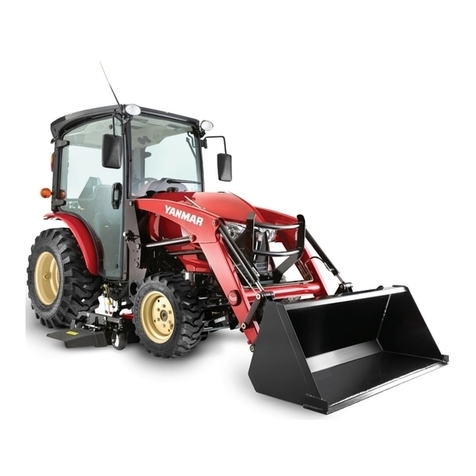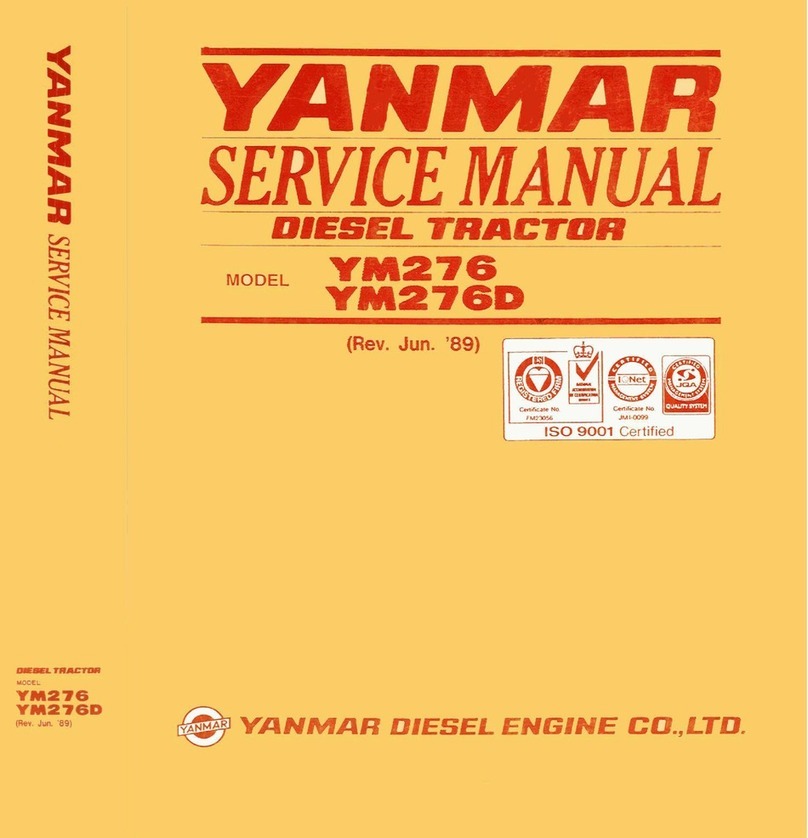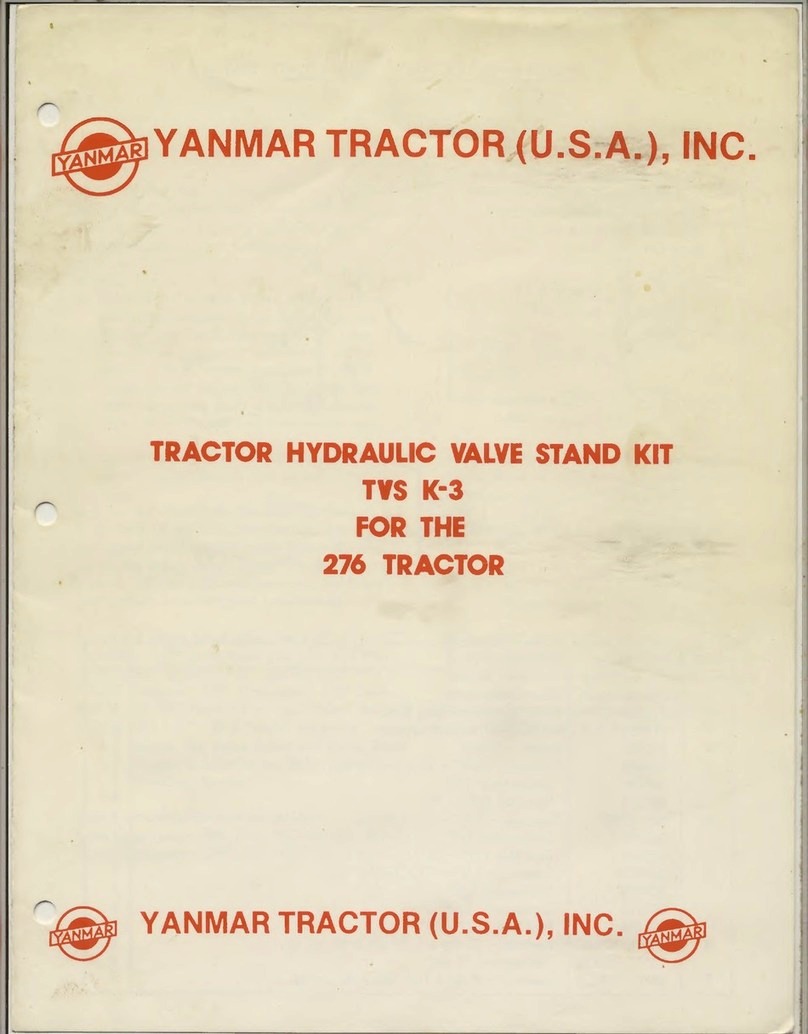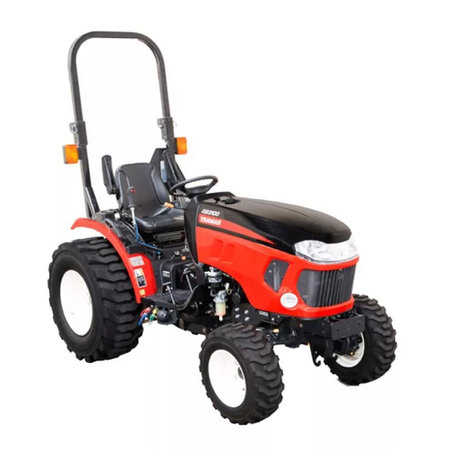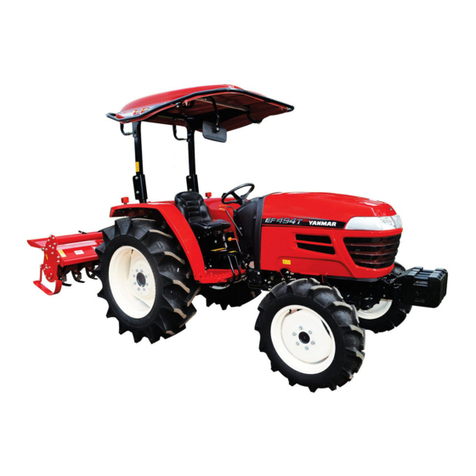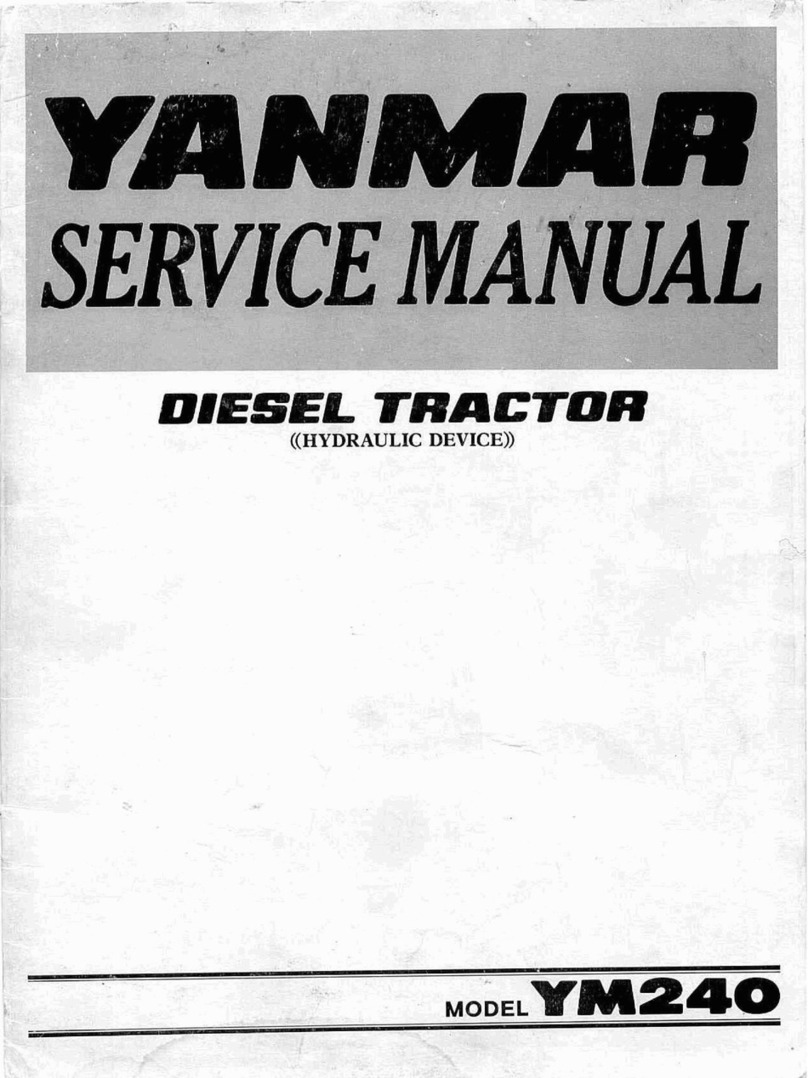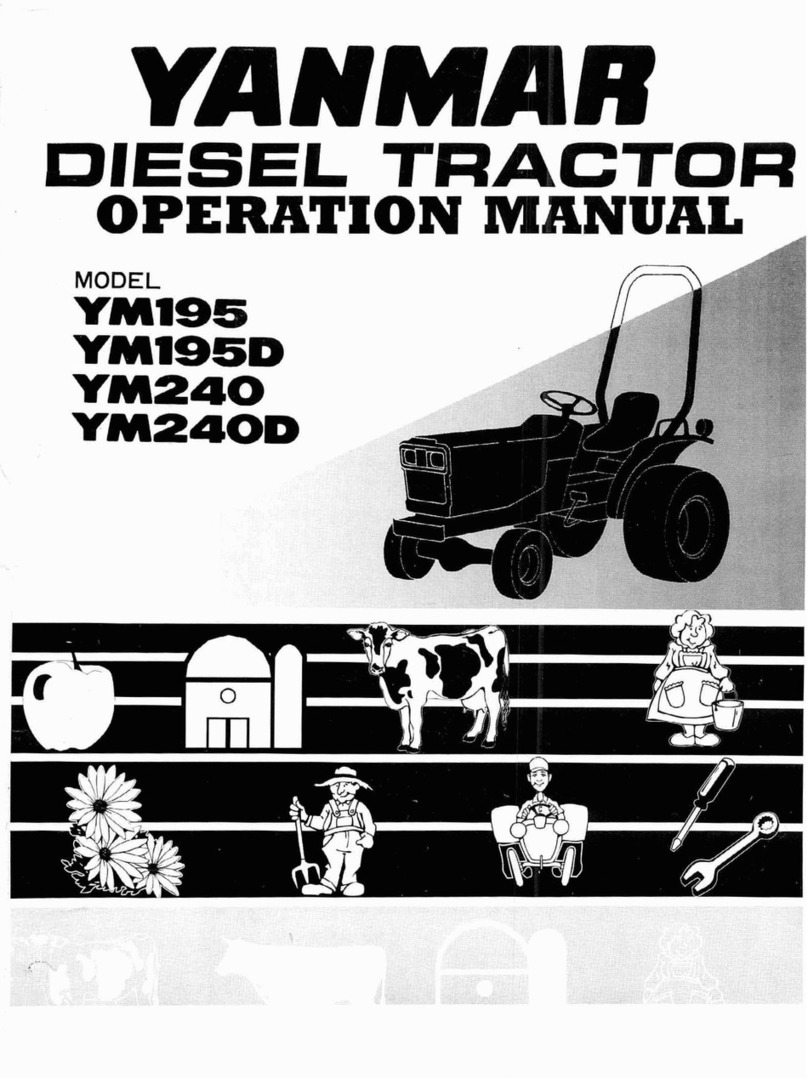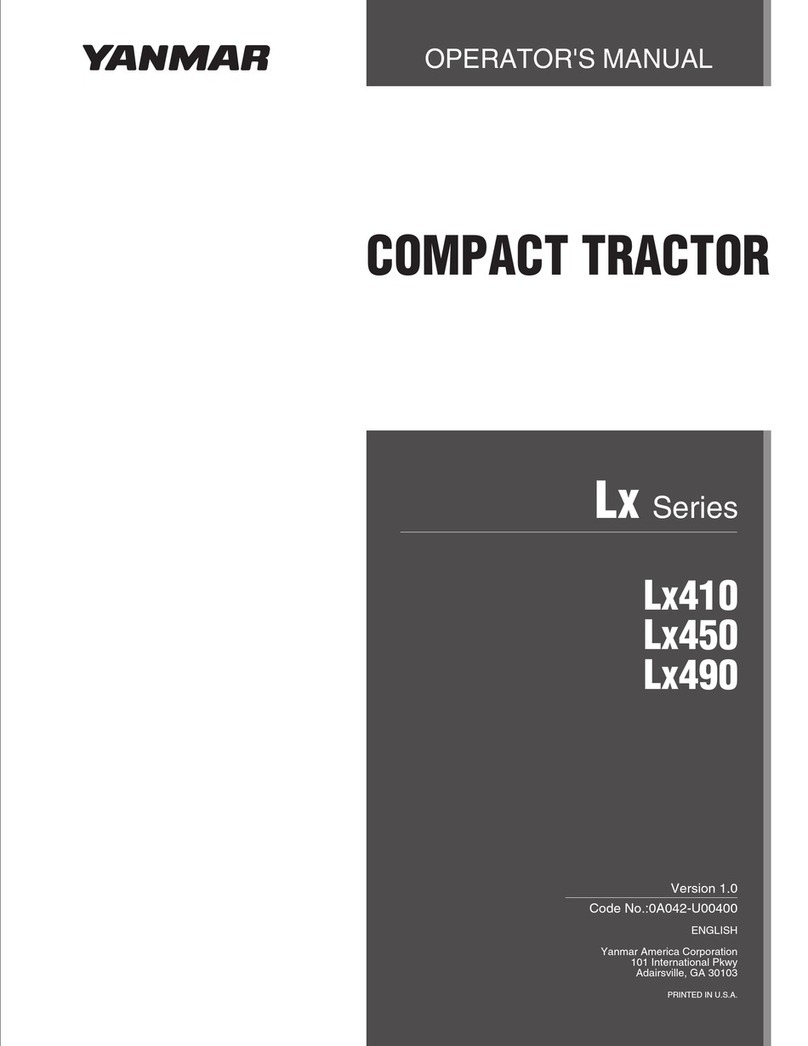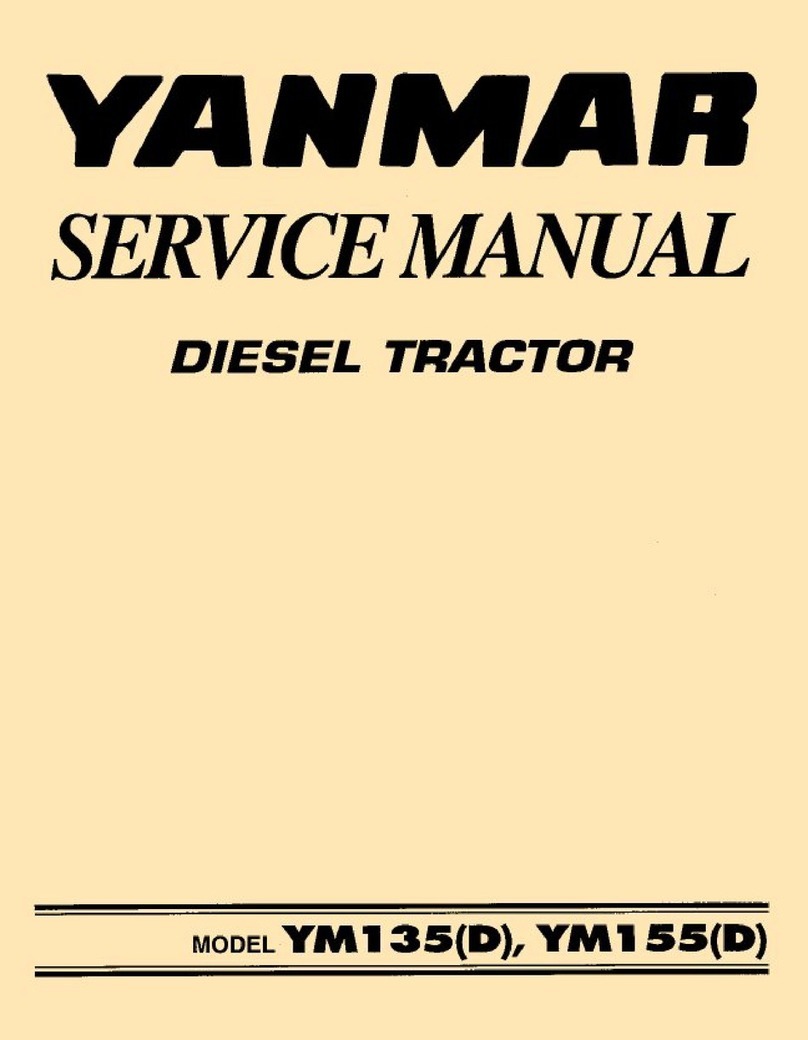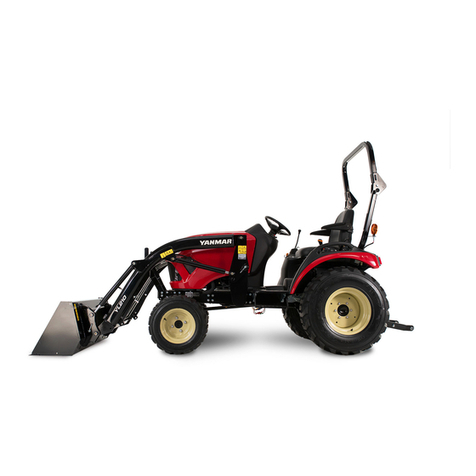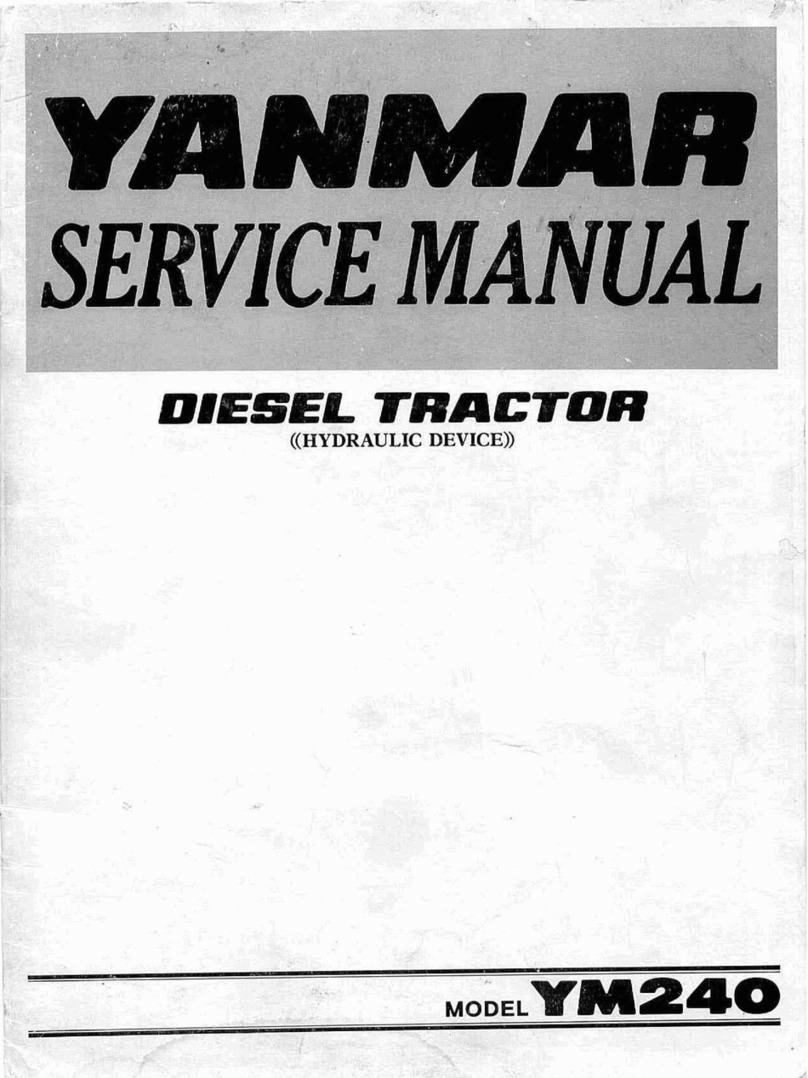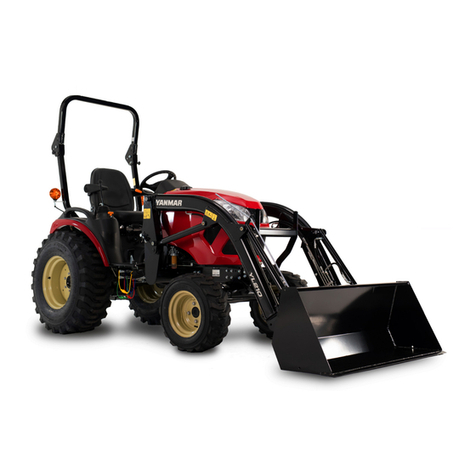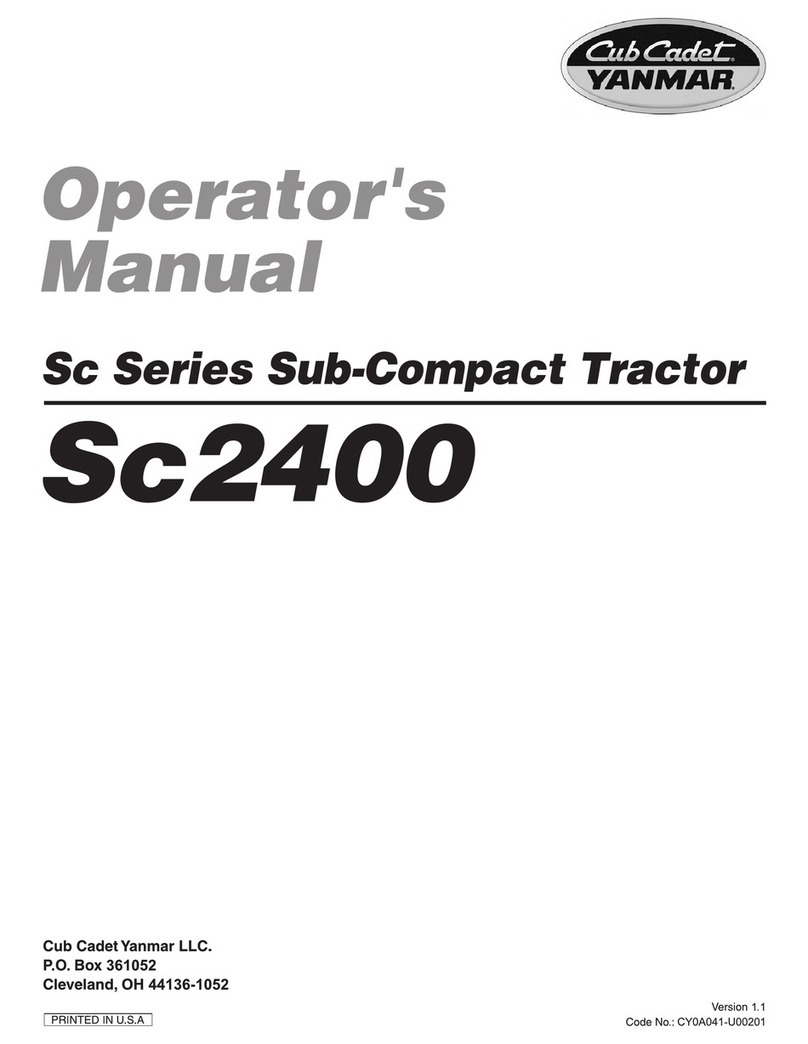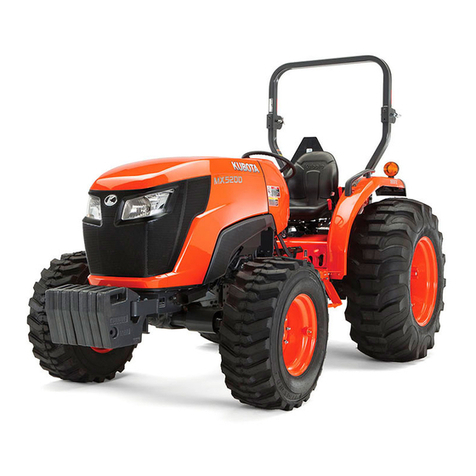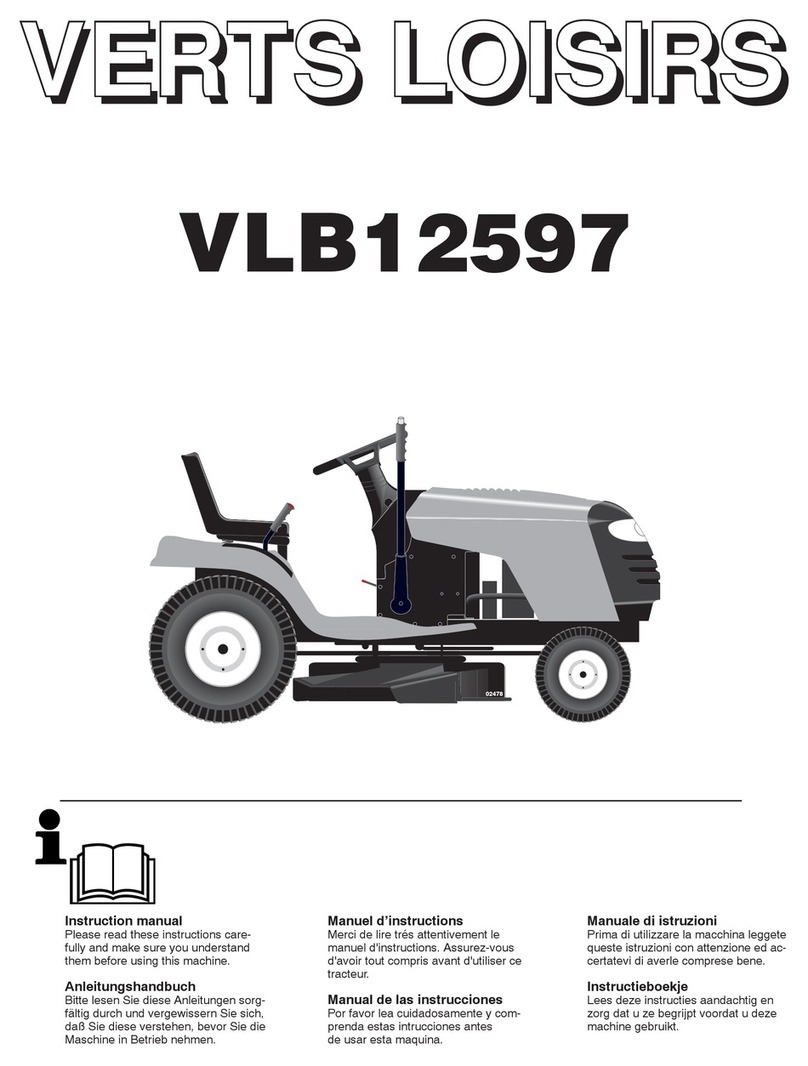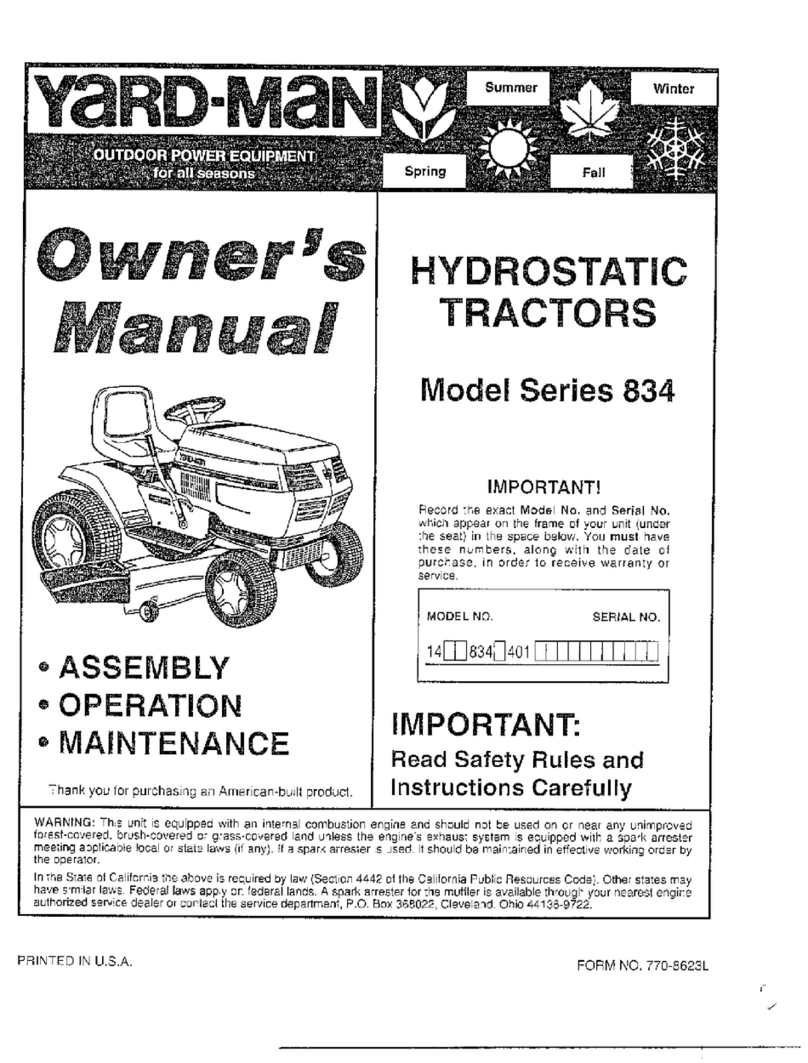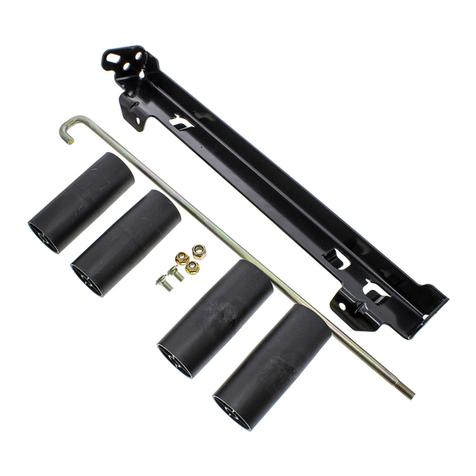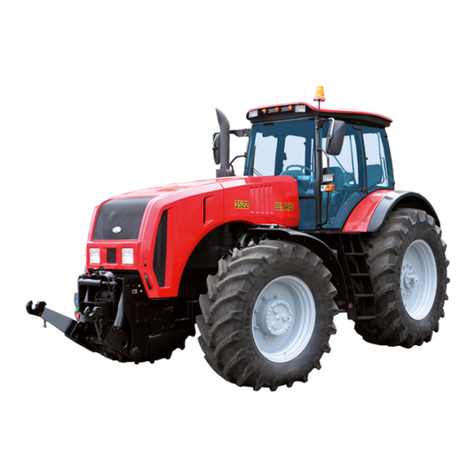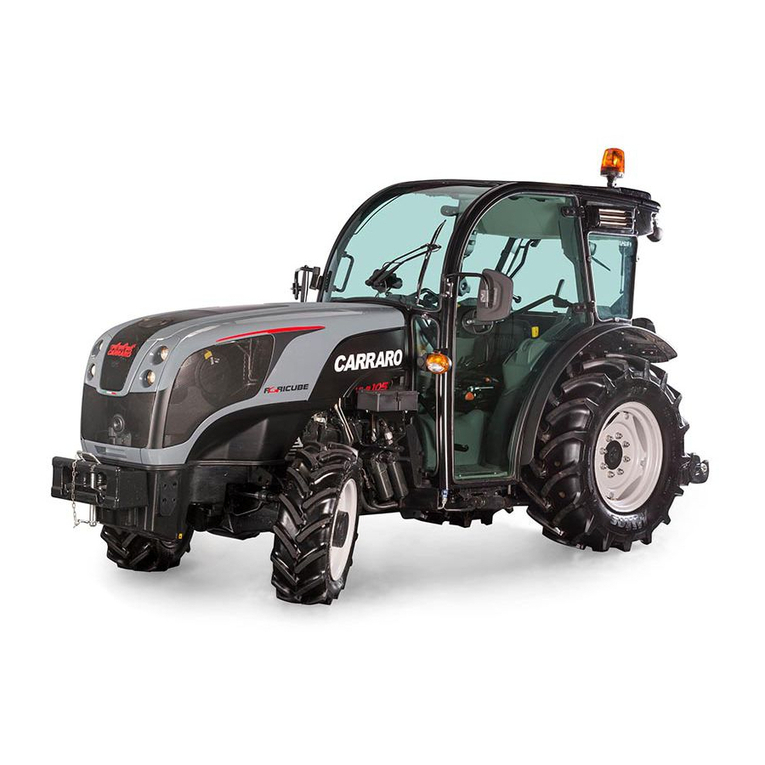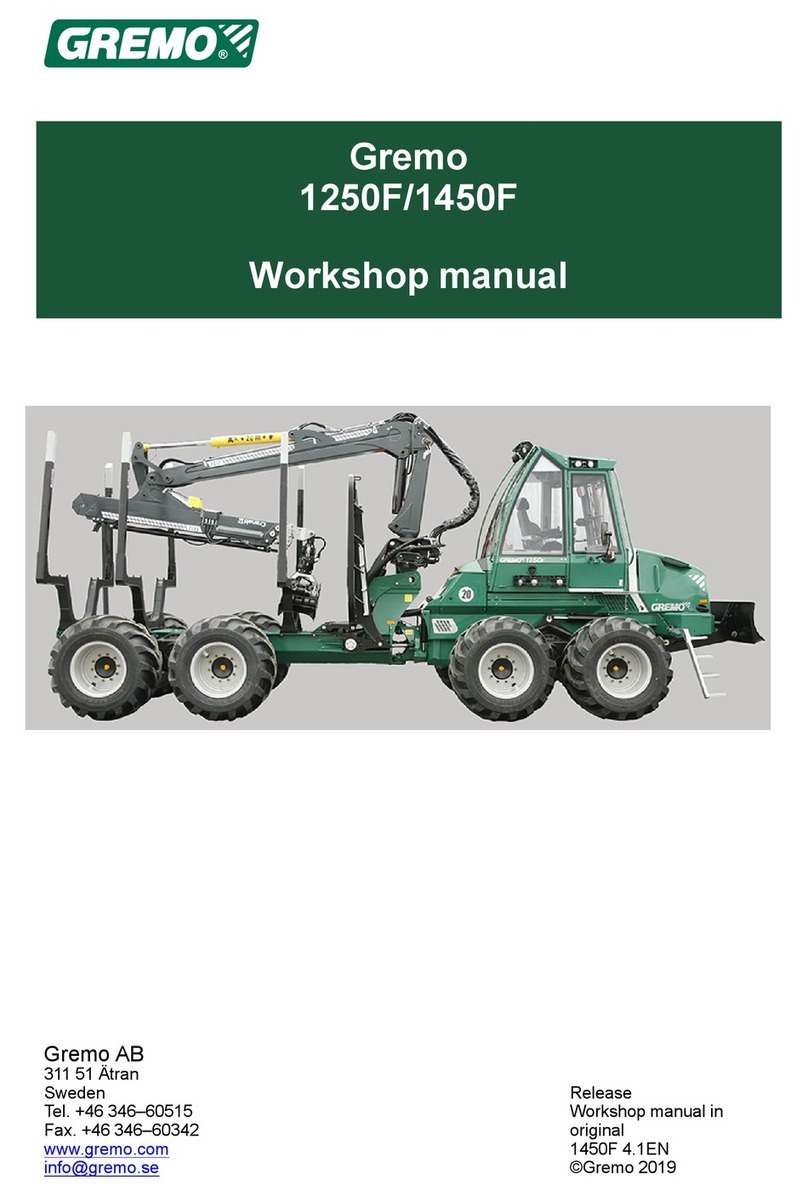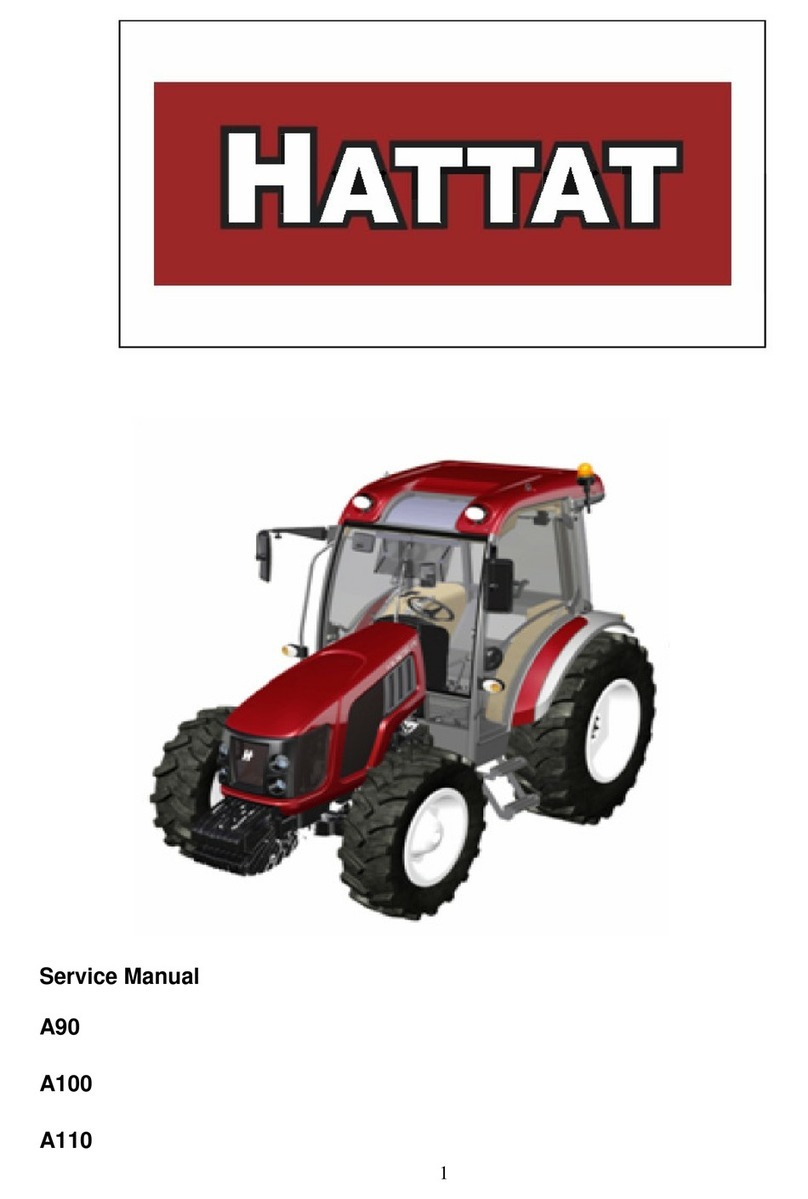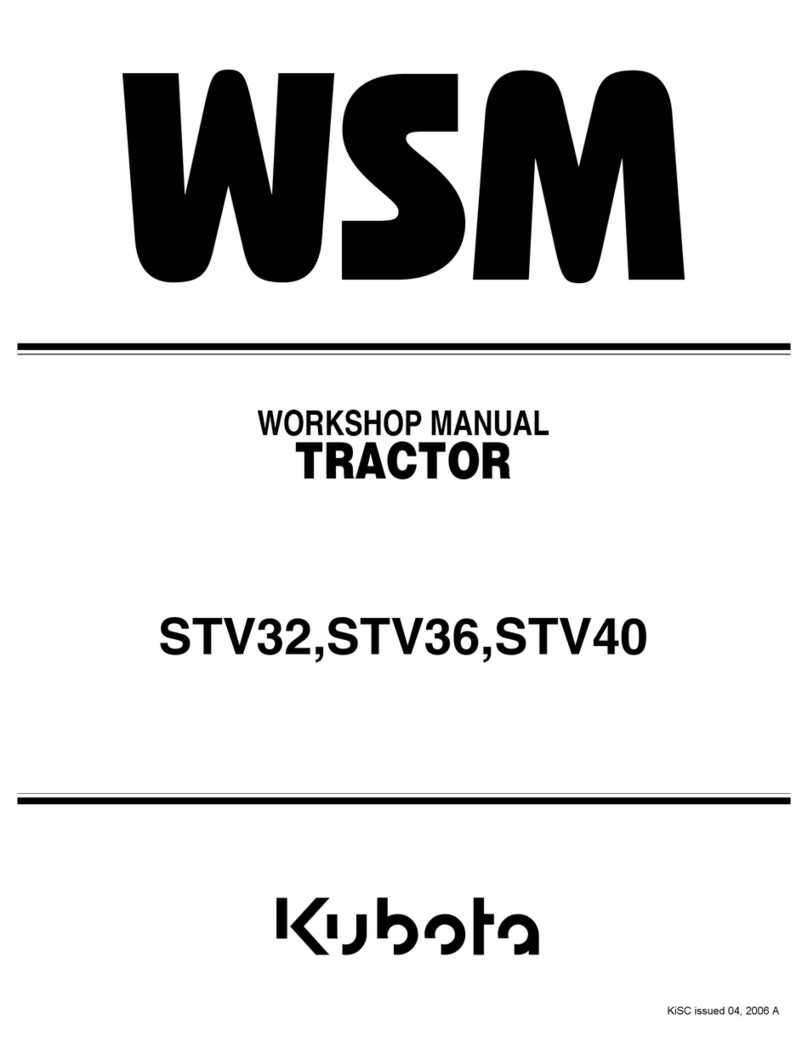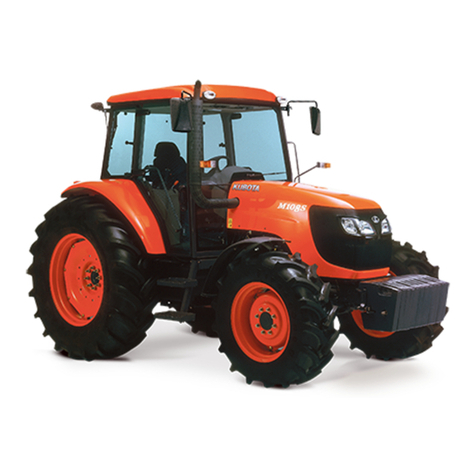EF494T OM
3
BEFORE OPERATING
Do not operate the tractor when tired, sick, sleepy,
drunk, feeling overworked, taking medicine, pregnant,
suffering from mental disease or if other improper
conditions are present. These conditions impair a
person’s skill and judgment. When you begin feeling
tired while operating the tractor, take a 10-minute break
to stretch, walk about, lie down or snack. Do not
continue if you still feel tired after taking a break.
Remove oil, grease or mud from the hand rails, steps,
pedals, controls, and floor to avoid slips or loss of
control.
In winter, scrape off any ice or snow on the handrails,
steps, pedals, controls, and floor.
To attach or remove an implement, refer to the
implement and tractor manufacturer’s manuals for the
proper procedures.
To unhitch an implement, move to a level area, lower the
implement to the ground and then block the equipment
in position before unhitching. If an implement has
wheels, block them to prevent it from rolling.
Make sure
(1) The tractor and implements are in good condition
and properly adjusted.
(2) To check for loosened bolts, adequate lubricants,
damaged or under-inflated tires, safety shields and
devices, steering and braking linkages, hydraulic
leaks, etc. Refer to this manual for more detailed
information.
(3) That implements are properly attached and hooked
up. Check that the PTO U-joint yoke and locking
devices are securely latched on their shafts.
(4) That the tractor’s PTO speed matches the
implement’s specifications.


